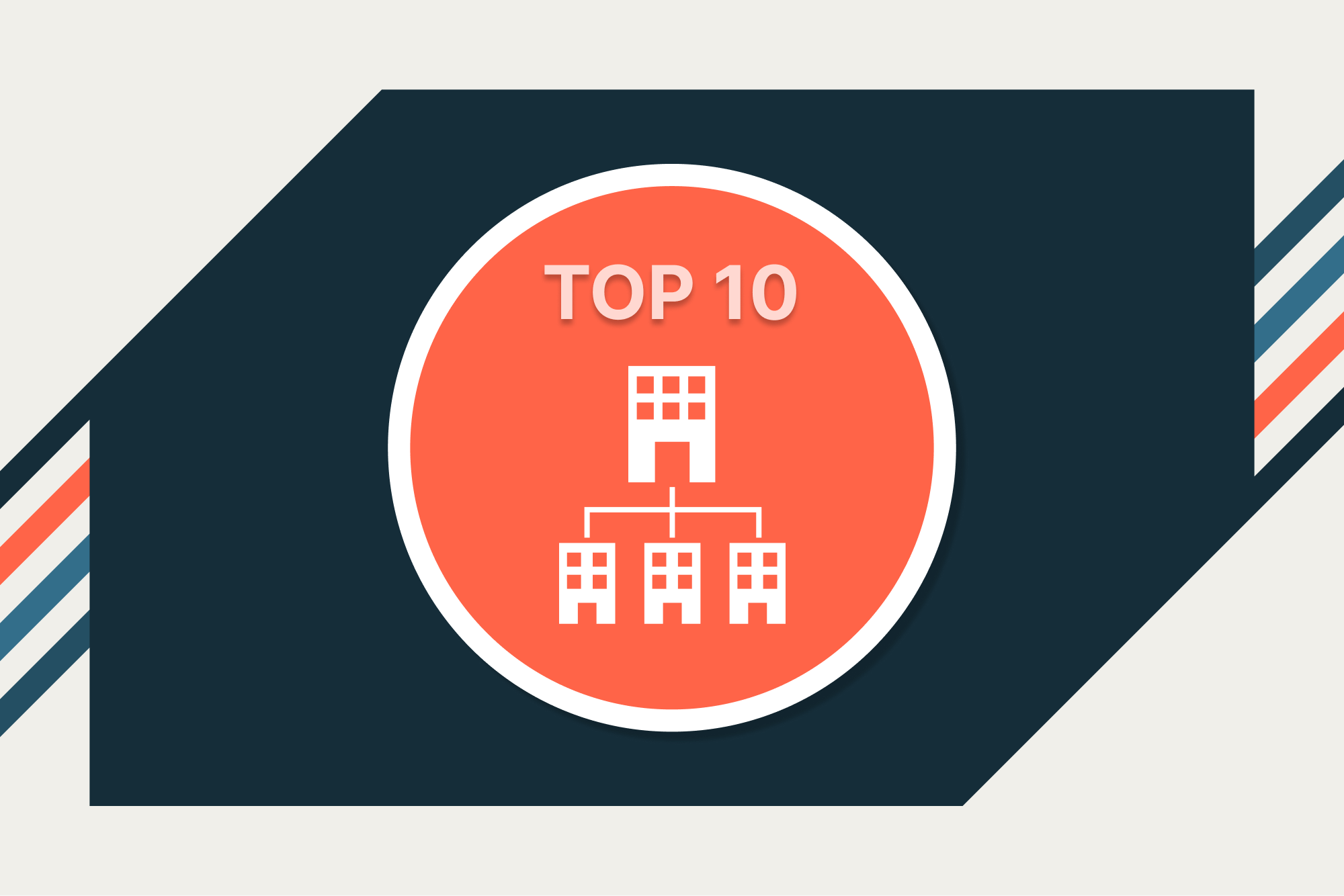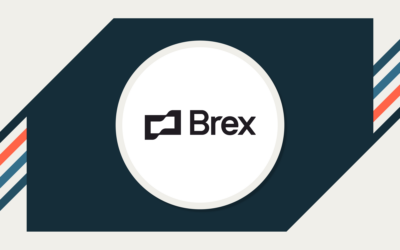18% of organizations work with over 1,000 third-party vendors. That sounds crazy … until you read that 16% work with more than 10,000 third-party vendors.
What we take from that statistic is that companies work with many, MANY vendors today. So it’s easy to grasp how procuring and managing vendors devolves into chaos without the right vendor management software and systems (VMS).
Managing vendors the best way:
- Streamlines operations (listing all your vendors and describing their services and payment terms).
- Locks in supplier relationships.
- Ensures compliance.
And that feels much better than lackluster vendor management, which retroactively responds to missed payments, replies to impatient emails ad hoc, and contributes to higher operational costs, supply chain issues, and industry non-compliance penalties.
Let’s keep your vendors happy.
Here are the top vendor management solutions in 2024, along with their features, best use cases, and pricing models.
TL;DR
How to choose vendor management software.
Across all vendor management solutions, there are six key considerations that should have big checkmarks. These form the basic foundation for successfully managing vendors in a way that greenlights your business goals:
1. Easy to use.
2. Integrates seamlessly.
3. Scales as you grow.
4. Great support.
5. Top-tier security.
6. Glowing user testimonials.
Ease of use.
The software should have an intuitive user interface with a minimal learning curve. An overly complex system leads to errors, decreased efficiency, and low adoption rates, while a user-friendly design onboards employees quickly to maximize its benefits. Advanced features can be learned later — a great vendor management system works well out of the box.
Integration capabilities.
Your vendor management solution should integrate seamlessly with existing systems:
- Enterprise Resource Planning (ERP) software.
- Customer Relationship Management (CRM).
- Accounting tools.
When vendor information flows smoothly from point of entry, across departments, to paid invoice, operations award a gold star and vendors appreciate your company — the favorable spinoff of which bounces back positively.
Scalability.
As your business grows, so will your list of vendors. A scalable VMS accommodates business growth by standing ready to plug in more features and capabilities as needed without disrupting your existing vendor management process.
Support.
If your VMS goes down six months from now and you’re worried that supply chain barriers will cause delays, there must be dedicated support to get you back up and running again. You’re not looking for basic, mediocre problem solving; look for vendor management software that comes with built-in responsive, comprehensive customer support.
Support should also include any necessary training and onboarding to get the system set up properly and make sure users are comfortable with — and excited about — the time they’ll save and the efficiency they’ll enjoy.
Security features.
Vendor management systems hold a lot of sensitive data: tax ID numbers, banking details, and personal contact information. A solution with lax security features leads to costly data breaches, lost customers, and stress on your vendor relationships.
Positive user reviews.
Don’t take a company’s marketing claims at face value. Look for independent user reviews (from real users) and see what kind of experiences they’ve had with the company’s solutions, customer support, security, and more.
Essential vendor management software features.
Look for a VMS that has the following features (and avoid any VMS that falls short):
Vendor onboarding.
Gone are the days of buying software and struggling to figure it out while the ink is still damp on the sales receipt. Onboarding has become a multi-million dollar industry in itself to address the cumbersome setbacks that used to happen immediately out of the starting blocks. Today, the sales team passes the baton to the customer success team which bases the efficacy of their department (and the reason why they exist) on net promoter scores (NPS).
Happy user reviews fuel their paychecks.
So your onboarding process should show all users how easy it is to update vendor information and integrate new suppliers into the system. A well-designed onboarding process saves your team time and ensures compliance with company policies and regulatory requirements. On the service provider and supplier side, smooth onboarding makes a good first impression and leads to better working relationships.
Basic features.
Look for a solution that offers:
- Automated workflows: Automated data entry, document upload, and approvals speed up the onboarding process and minimize errors.
- Document management: Centralized storage for all vendor-related documents, such as vendor contracts and compliance documents, keeps everything secure, accessible, and organized.
- Self-service: A self-service portal, complete with standardized templates and pre-filled forms, makes it simple for vendors to submit their information and update it as needed.
Performance monitoring.
Evaluate vendors by tracking performance-related indicators (KPIs) and see at a glance top vendors and vendors whose contracts you might want to reconsider. Your VMS should provide performance monitoring tools like:
- Customizable performance dashboards: When vendor KPIs are displayed graphically, you see a clear comparative overview of each vendor’s performance.
- Automated alerts: Notifications for performance issues and contract renewals arms your team with real-time information for timely intervention.
- Detailed reporting: Customizable reports give you in-depth analyses of vendor performance over time, which you can use to identify trends, highlight areas for improvement, and make data-driven decisions.
When it comes to managing vendors, data is everything. A dashboard that displays data visually makes it easy to evaluate your vendor relationships, negotiate favorable contract terms, and forecast future performance.
Risk management.
40% of cyberattacks originate in the extended supply chain. That makes managing vendor risk a critical lever.
Your VMS should include:
- Comprehensive risk assessment tools: Look for tools that assess vendors’ financial stability, compliance history, and performance track record.
- Continuous monitoring: Track vendor performance and compliance in real time to identify potential issues before they impact your business.
- Incident management: Tackle incidents head-on with automated workflows that prevent operational disruptions.
Compliance tracking.
The right tools simplify industry compliance with better transparency and accountability.
Look for vendor management software solutions that have these functions:
- Audit trails: Stay audit-ready by automatically recording and tracking all vendor interactions, including communication logs, document submission, and approval processes.
- Regulatory compliance: Ensure your vendor management tool supports applicable industry-specific regulations, such as GDPR, HIPAA, and SOX.
- Automated compliance checks: Protect your business from legal issues, fines, and reputational damage with automated reminders for document renewals, regular vendor audits, and real-time time compliance monitoring.
Communication and collaboration.
Integrated communication and collaboration tools keep all vendor interactions confined within the platform for better control, compliance, and audit-readiness.
Look for built-in tools like:
- Real-time messaging: Synchronous vendor communication for both sides means quick issue resolution.
- Shared workspaces: Streamline workflows with secure, collaborative tools for project management and document sharing.
- Feedback systems: Two-way feedback for continuous improvement is essential for developing positive working relationships between businesses and vendors.
Financial management.
Finally, your vendor management platform should include financial tools for seamless cost management and payments, such as:
- Expense tracking: How much are you spending? Monitor spend and stay on budget with detailed vendor-related expense tracking.
- Invoice management: Automated invoicing speeds up payment cycles and reduces manual input and the risk of errors.
- Payment schedules: Avoid late fees, keep your vendors happy with on-time payments, and take advantage of early payment discounts.
10 best vendor management software and systems for 2024.
Now that you know what to look for in a VMS solution, let’s dive into the best vendor management software based on:
- Pricing.
- Reviews.
- Best features.
Airbase.
Airbase offers a powerful, user-friendly VMS as a part of its full procure-to-pay platform. In addition to seamless vendor management, Airbase software covers the full buying cycle with complete guided procurement.
The platform excels at onboarding vendors quickly and managing suppliers efficiently. Tools for managing finances provide detailed expense tracking, budgeting, forecasting, automated invoice processing, and more. It’s the best vendor management software for mid-market enterprises that want to bring their procurement and financials into a single platform for unparalleled control and visibility.
Features:
- Self-service vendor portal with customizable onboarding.
- Automated invoice processing.
- Comprehensive expense tracking and management.
- Real-time financial reporting and dashboards.
- Data-driven spend analytics.
- Advanced risk mitigation tools.
- Seamless integrations with all of the tools you already use.
Pricing:
Flexible pricing with quotes available on request.
G2 rating:
4.8 stars
Best for:
Mid-market enterprises and rapidly growing companies that need a comprehensive procurement solution.
Black Kite third-party risk intelligence platform.
Black Kite’s advanced risk management tools help businesses mitigate vendor risks. The platform offers real-time monitoring and detailed reporting to identify potential risk factors and resolve them before they affect operational efficiency. In addition, its robust risk assessment tools provide detailed evaluations of vendor performance and compliance.
Features:
- Advanced risk assessment and mitigation tools.
- Real-time monitoring of vendor risks.
- Detailed reporting and analytics.
- Continuous compliance checks.
- Incident management and resolution workflows.
Pricing:
Quotes available on request.
G2 rating:
Not available.
Best for:
Large enterprises and businesses with extensive third-party risk management needs.
Coupa.
With a user-friendly interface, strong customer support, and seamless integrations with ERP systems, Coupa customers like the expense management functionality. The platform’s comprehensive performance monitoring tools provide detailed dashboards and automated alerts for KPIs, while financial management features ensure accurate expense tracking and efficient payment processing.
Features:
- Expense management and tracking.
- Seamless integration with enterprise systems.
- User-friendly interface.
- Automated alerts for performance and compliance.
- Detailed performance dashboards and reports.
Pricing:
Quotes available on request
G2 rating:
4.2 stars
Best for:
Mid-market to large enterprises, especially those focused on comprehensive expense management
OneTrust third-party risk management.
OneTrust offers advanced compliance tracking and risk assessment tools, making it an ideal solution for industries with strict regulatory requirements. Detailed audit trails and automated checks simplify compliance, while the platform’s risk management features deliver continuous monitoring and incident management tools.
Features:
- Comprehensive compliance tracking and audit trails.
- Automated risk assessment tools.
- Continuous monitoring of vendor compliance.
- Real-time incident management.
- Robust integration capabilities with enterprise systems.
Pricing:
Quotes available on request.
G2 rating:
4.5 stars
Best for:
Businesses of all sizes with stringent regulatory compliance requirements.
ServiceNow vendor risk management.
ServiceNow’s scalable platform provides complete risk management through continuous monitoring and granular incident management. It connects with other enterprise systems to ensure efficient data flow throughout the organization, and its robust performance monitoring tools offer detailed dashboard and customizable reports for data-driven decision-making.
Features:
- Scalable platform for businesses of all sizes.
- Continuous monitoring and incident management.
- Extensive integration capabilities.
- Detailed performance dashboards and customizable reports.
- Automated compliance checks and audit trails.
Pricing:
Quotes available on request.
G2 rating:
5.0 stars.
Best for:
Large enterprises and organizations that need scalable and robust risk management solutions
QuickBooks Online.
QuickBooks Online offers a suite of financial management tools ideal for small to mid-sized businesses. While it’s not a comprehensive VMS, its ease of use and affordability make it a great solution for smaller companies with moderate vendor management needs. The platform includes expense tracking and automated invoice processing tools for efficient financial management through a familiar, user-friendly interface.
Features:
- Robust financial management tools.
- Automated invoice processing.
- User-friendly interface.
- Comprehensive expense tracking.
- Strong customer support and affordability.
Pricing:
Plans ranging from $30-$200 a month.
G2 rating:
4.0 stars
Best for:
Small to mid-sized businesses seeking affordable and user-friendly financial management tools.
SAP Fieldglass.
Designed for large enterprises, SAP Fieldglass offers extensive integration capabilities and advanced performance monitoring tools. Detailed dashboards and automated KPI alerts ensure efficient vendor management, while the platform’s risk management and compliance tracking features safeguard companies against external threats and regulatory infractions.
Features:
- Advanced performance monitoring tools.
- Extensive integration capabilities.
- Detailed dashboards and automated alerts.
- Comprehensive risk management features.
- Compliance tracking and audit trails.
Pricing:
Quotes available on request.
G2 rating:
4.5 stars
Best for:
Large enterprises with complex vendor and performance management needs.
Tropic.
Tropic focuses on simplifying vendor management with automated workflows and detailed analytics. With customizable dashboards and reports, robust expense tracking, and efficient payment processing, the platform streamlines performance monitoring and financial management.
Features:
- Simplified vendor management with automated workflows.
- Detailed analytics and performance monitoring.
- Comprehensive financial management tools.
- User-friendly interface.
- Strong customer support.
Pricing:
Quotes available on request.
G2 rating:
4.6 stars
Best for: Mid-market companies looking for simplified vendor management and detailed analytics.
Vanta.
Vanta specializes in security and compliance with advanced tools to ensure vendors meet industry standards. The platform offers automated compliance checks and detailed audit trails for hassle-free regulatory adherence, and its risk management features include continuous monitoring and incident management tools. With its extensive integration capabilities, Vanta is ideal for enterprises that need organization-wide visibility and control.
Features:
- Automated compliance checks and detailed audit trails.
- Continuous monitoring of vendor compliance.
- Advanced risk management tools.
- Robust integration capabilities.
- Real-time incident management.
Pricing:
Quotes available on request.
G2 rating:
4.6 stars.
Best for:
Businesses of all sizes, particularly those with a focus on security and compliance.
Venminder.
Venminder provides comprehensive risk management and compliance tracking capabilities, including thorough audit trails, automated compliance checks, and customizable reports and dashboards. The platform’s extensive features and user-friendly interface make it simple for businesses of all sizes to stay compliant and ensure robust vendor performance.
Features:
- Comprehensive risk management and compliance tracking.
- Detailed audit trails and automated compliance checks.
- Robust performance monitoring tools.
- User-friendly interface.
- Strong customer support.
Pricing:
Quotes available on request.
G2 Rating:
4.7 stars
Best for:
Mid-sized to large enterprises requiring comprehensive risk management and compliance tracking features.

AP Automation Tour
Explore 3-way matching in our AP Automation Product tour.
Overview: Vendor Management software.
| Company | Top Feature | Primary Market | G2 Rating |
| Airbase | Procure-to-pay | Mid-market | 4.8 |
| Black Kite | Risk management | Large enterprises | N/A |
| Coupa | Expense management | Mid-market to large enterprises | 4.2 |
| OneTrust | Compliance | All businesses | 4.5 |
| ServiceNow | Risk management | Large enterprises | 5.0 |
| QuickBooks | Financial management | Small to mid-sized businesses | 4.0 |
| SAP Fieldglass | Performance monitoring | Large enterprises | 4.5 |
| Tropic | Vendor management | Mid-market businesses | 4.6 |
| Vanta | Security | All businesses | 4.6 |
| Venminder | Risk management | Mid-sized to large enterprises | 4.7 |
Airbase: Top-tier vendor management software.
As with most challenges, the right tool is half the battle. Airbase makes it easy to manage vendors, streamline processes, minimize third-party risk, and put checkmarks in regulatory boxes.
Airbase is a complete procure-to-pay solution that unites procurement, vendor management, and financial management into one user-friendly, integrated platform. Better visibility means better control from start to finish.
Customizable dashboards provide at-a-glance overviews that make monitoring a cinch, and granular reports empower you to make data-driven financial decisions. With Airbase’s automated workflows, invoice processing, and approvals, your teams reach peak efficiency.
See how Airbase transforms your vendor management — schedule a demo today.
FAQ.
What is vendor management software?
Vendor management software (VMS) helps businesses manage relationships with vendors and suppliers more efficiently. It offers a centralized platform to handle various vendor management tasks, including onboarding, performance monitoring, risk management, compliance tracking, contract management, vendor communication, and financial management.
By automating and streamlining these processes, VMS helps businesses improve operational efficiency, reduce risks, and ensure compliance with industry regulations. It can also provide valuable insights through detailed reporting and analytics, enabling companies to make data-driven decisions about their vendor relationships.
How much does vendor management software cost?
The cost of a vendor management software solution varies significantly based on the features offered, the number of users, and the size of the business. Some providers offer free trials or freemium versions with limited features, which can be a good way to test the software before committing to a paid plan. When evaluating costs, consider not just the subscription fees but also any additional costs, such as implementation, training, and ongoing support.
 Jira Integration – Streamline Your Workflows
Jira Integration – Streamline Your Workflows  Ironclad Integration – Simplify Legal Operations
Ironclad Integration – Simplify Legal Operations  Asana
Asana 




